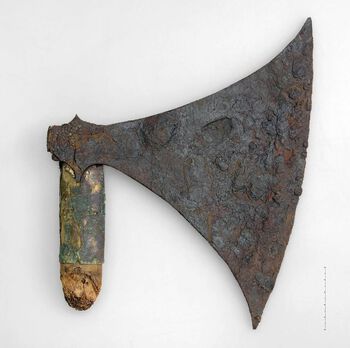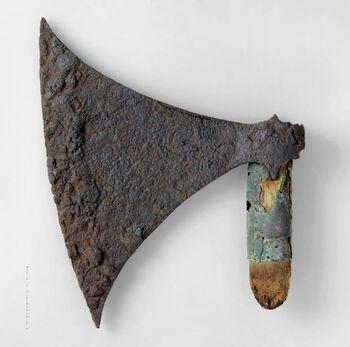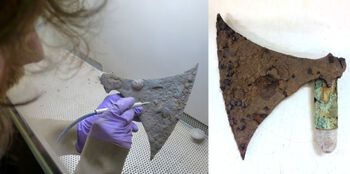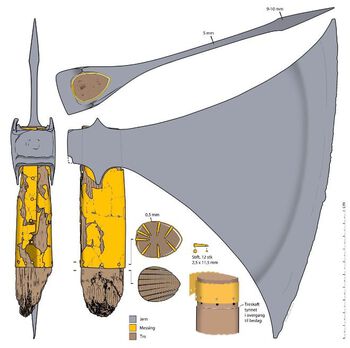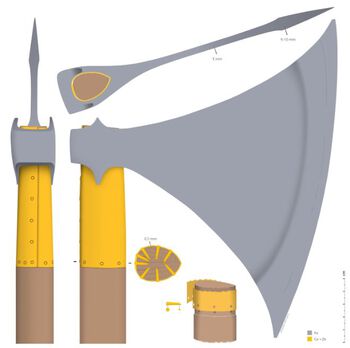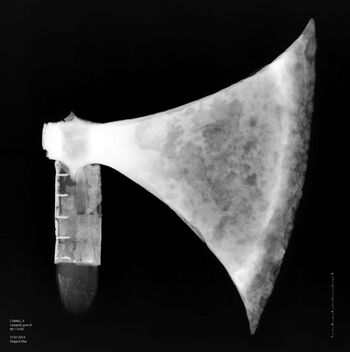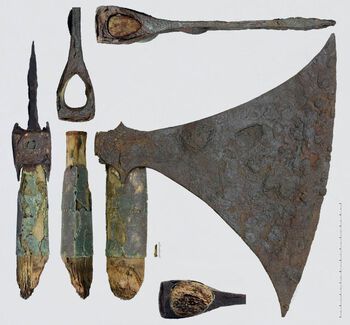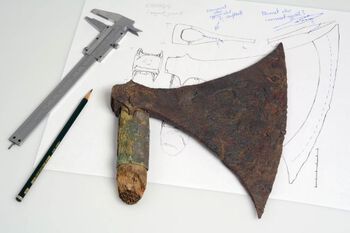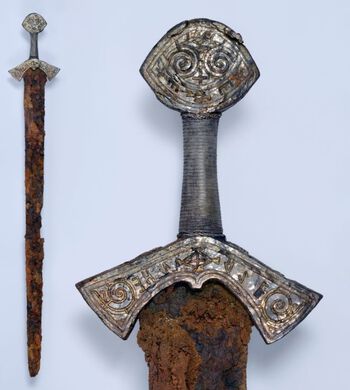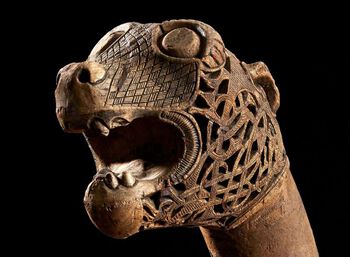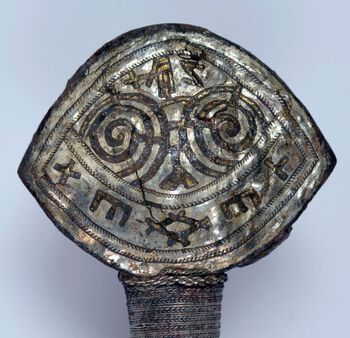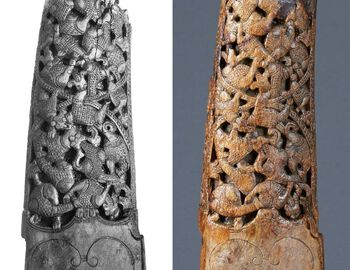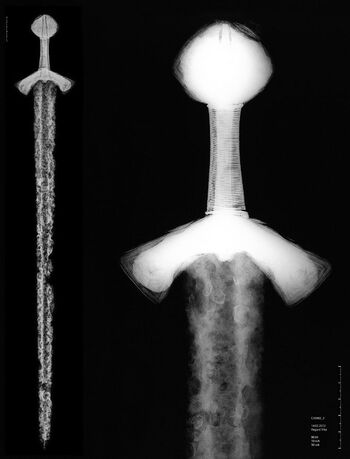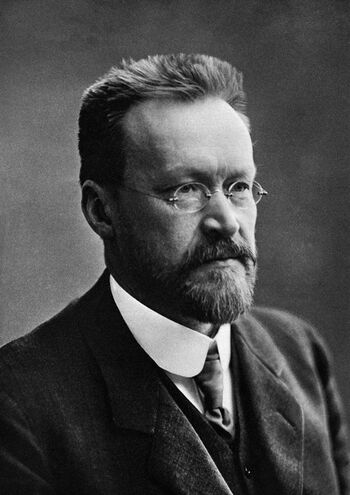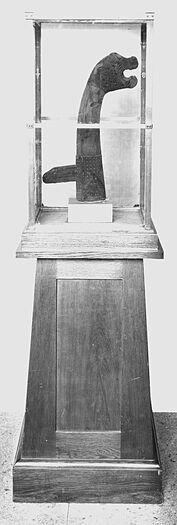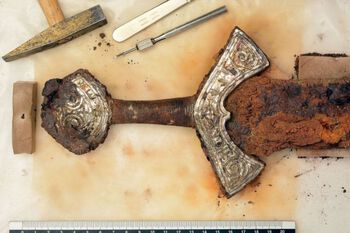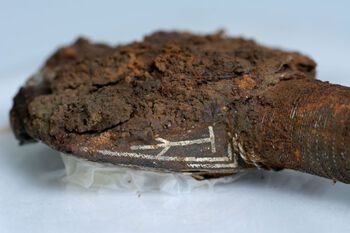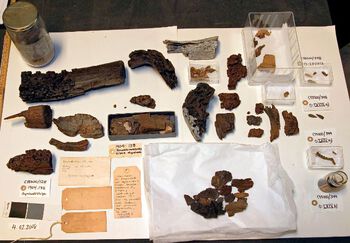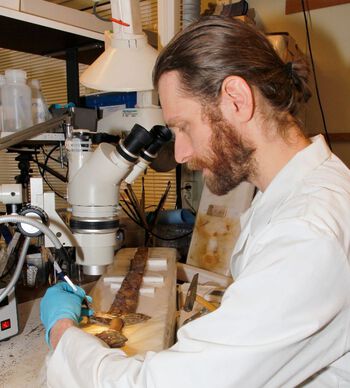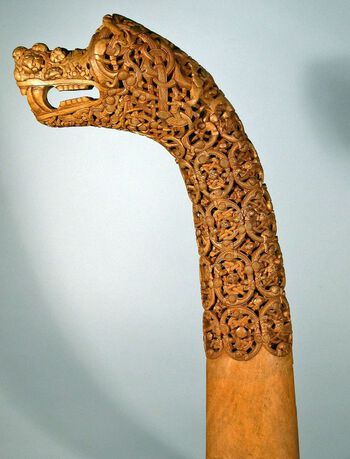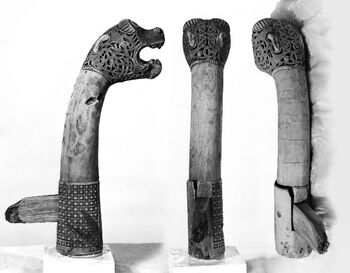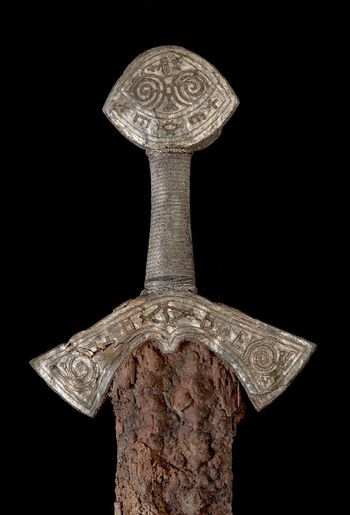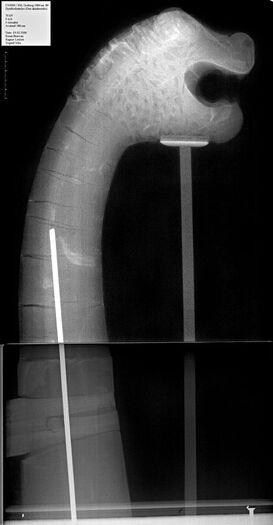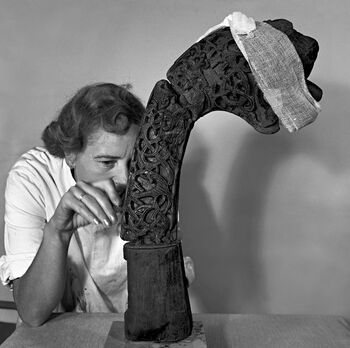Images
-
Jan. 30, 2017
Detailed drawing of the axe. Illustration: Vegard Vike, KHM/UiO.
-
Dec. 15, 2016
A reconstruction showing the main design features of the axe. Illustration: Vegard Vike, KHM/UiO.
-
Dec. 9, 2016
X-ray photograph of the axe. The thickening of the blade behind the cutting-edge can be seen and a weld line at the insertion of the steel bit. The pins fastening the brass banding to the haft are also visible. X-ray photograph: Vegard Vike, Museum of Cultural History, UiO.
-
Dec. 15, 2016
The sword from grave 8 at Langeid in Setesdal valley. It is 91 cm long, almost completely preserved. Only a few centimetres are missing from the tip of the blade. Museum number C58882/3.
-
Feb. 9, 2017
Figure 1: The Iconic animal head post the ‘Academic’s fine details, is preserved thanks to advanced preservation techniques. Photo: Museum of Cultural History, UiO / Kirsten Helgeland.
-
Dec. 15, 2016
Close-up photo of the pommel. Inlays of gold wire makes up the central line in each symbol. The gold is framed by a copper wire that is now black. All the intermediate surfaces have been filled in with parallel silver wires. At the top a hand holding a cross is visible. Photo: Vegard Vike, Museum of Cultural History, UiO.
-
Feb. 9, 2017
Figure 2: The animal head post the ‘Carolingian’, before treatment (left) and after treatment (right) with alum. The blurring of surface carving is obvious. Photo: Museum of Cultural History, UiO / Kirsten Helgeland (right).
-
Dec. 15, 2016
On X-ray it is possible to glimpse rows of signs along the sword blade, but these are very unclear and difficult to define. X-ray photo: Vegard Vike, Museum of Cultural History, UiO.
-
Feb. 9, 2017
Figure 3: Professor Gabriel Gustafson (1853-1915), Head of the Museum of National Antiquities and leader of the Oseberg excavations. Photo: Museum of Cultural History.
-
Feb. 9, 2017
Figure 4: The ‘Academic’, at home in its aquarium in the Oseberg salon, Historic Museum, around 1912. Photo: Museum of Cultural History.
-
Dec. 15, 2016
In the midst of the conservation process. The precious metal surface of the hilt is being uncovered with a hammer and micro-chisel.
-
Feb. 9, 2017
Figure 5: The animal head post the ‘Baroque master's last', was destroyed in the 1940s when its tank sprung a leak. Now it is packed away in the museum stores. Photo: Museum of Cultural History.
-
Dec. 15, 2016
The conservator Vegard Vike working on uncovering the hilt of the Langeid Sword.
-
Feb. 9, 2017
Figure 6: Woodcarver Jørgen Eriksen‘s copy of the ‘Baroque master’s last‘ dragon head. He worked for only two years, between 1906 and 1908 making copies of the Oseberg finds. Photo: Museum of Cultural History.
-
Feb. 9, 2017
Figure 7: The ‘Academic’ in its water tank before treatment (left, center) and after treatment by t-butanol (right). The method preserved the surface details, but did not give enough resistance to cracking during drying, a common problem even today. Photo: Museum of Cultural History.
-
Feb. 10, 2017
Figure 8: X-ray of the 'Academic' showing the cracks in it's neck. Photo: Museum of Cultural History / Susan Braovac, Vegard Vike and Ragnar Løchen.
-
Feb. 10, 2017
Figure 8: Conservation scientist and chemist Annemor Rosenqvist (1914–2001) placing the final touches on the ‘Academic’ before display in the new Oseberg Wing at the Viking Ship museum. Photo: Museum of Cultural History.
